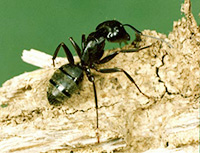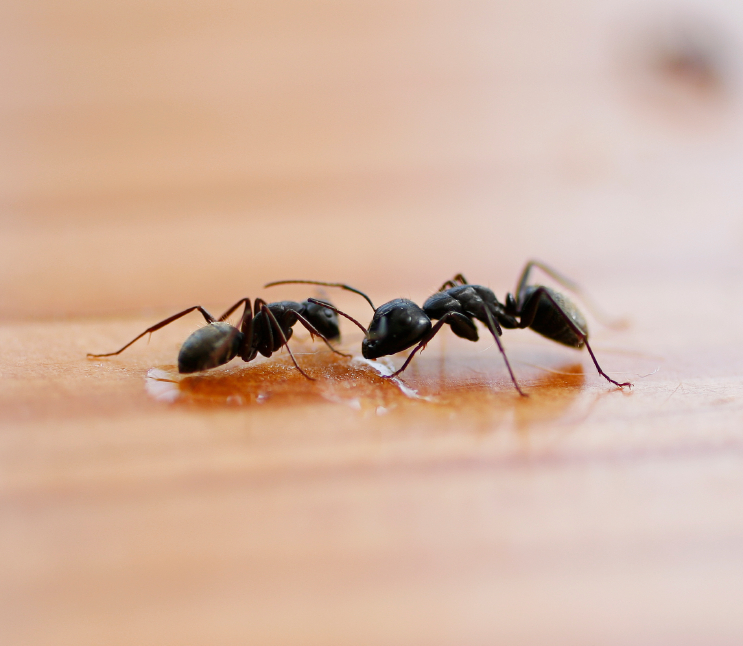Identification Of Ant Pest Control
Ant Pest Control Service requires too much of patience as they can invade any part of your house. There are over 12,000 species of ants throughout the world. Greater Atlanta, GA has over 100 species of ground dwelling ants. Ants, like most insects play a vital role in Georgia’s eco‐system, scavenging, cleaning up dead animals and plants. Ants in large quantities in and around homes can become a problem for Georgia residence.
Ants can be recognized from other insects because they have a small, thin waist called a pedicel, with either one or two nodes (joints) between the thorax and abdomen. Also, ants have elbowed antennae. Winged reproductive ants have four wings with the first pair being much larger in size than the hind pair. Swarming ants are frequently confused with termite swarms. However, termites have a broad waist, antennae have no elbow and they have four wings of equal size.
Ants are social insects. They live and work together in colonies made up of three castes. The three castes within an ant colony are the workers, queens and males.
Worker ants are sterile females and seldom have wings. The size and appearance of worker ants will often vary with the species. The function of the worker is to construct, repair and defend the nest, feed the immature and adult ants of the colony, including the queen, and to care for the brood.
Queens normally have wings but lose them after mating. The primary function of the queen ant is reproduction ants may have only one queen. These colonies are called monogyne ants. Depending on the species, many ants may have more than one queen. These colonies are called polygyne.
The male ant is usually winged and retains its wings until death. The sole function of the male ant is to mate with an unfertilized female. After mating occurs, the male ant dies.
Ants, like most insects, have an egg, larva, pupa and adult stage. Eggs are almost microscopic in size and hatch into soft, leg‐less larvae. Development from egg to adult may take from six weeks to two months.
Carpenter Ants
In some areas of the country, carpenter ants (wood ants), are black or bi‐colored red and black. They are 1/4 inch (6.35 mm) to 1/2 inch (12.7 mm). These ants can cause more damage to structures than termites. They are difficult insects to control and can cause extensive damage to wood members in a fairly short period of time. Carpenter ants do not actually eat wood but excavate galleries within it to use as nesting sites. Foraging activity can occur at any time of day but usually peaks at night. When foraging inside houses, carpenter ants are attracted to sweets, meat, grease and fat. A queen who begins a nest in a piece of old buried wood or in a partially decayed tree stump usually forms a carpenter ant colony. In mature infestations, there may be as many as ten satellite colonies linked to the parent colony by trails.
Argentine Ants
Argentine Ants, also known as piss ants and sugar ants, are a small ant, dark‐colored ant about 1/8 inch (3 mm) long that invades homes in search of food and water. They are especially fond of sweets, but will feed on practically any food. They love the yolks of hard‐boiled eggs and carry minute yellow clumps of yolk back to their nest in endless ant columns. These ants are extremely well adapted to urbanized areas of the United States with mild climates and well‐watered gardens. They are especially formidable due to their aggressive behavior and the enormous size of their colonies, which can literally “team up” with other colonies. If you are not treating the outside of you home for pests on a regular basis, ants will establish scent trails, which will lead into your house.
How, When and Why They Become a Nuisance Pest
Ants are pests around the home because they feed on and contaminate human food, infest structures and build unsightly mounds in lawns. In some cases, ants are able to inflict painful bites or stings.
Ant Pest Control Service for Ant Removal in Atlanta, Georgia
Ant pest control service requires conscientious efforts and the combined use of mechanical, educational, sanitation, exclusion and chemical applications. The best approach to ant prevention inside the home is sanitation. Any type of food or food particles can attract and provide sustenance for ants. Food should be stored in tight containers. Get rid of moisture sources, including condensation in crawl spaces, cabinets and other utilities, and leaks in water fixtures.
Take notes of where ants are observed, this information may help a professional exterminator. Some ants establish definite trails that can be followed to their nesting location. Location of the nest is the key to control of ants because they are colonizing insects. Killing large numbers of individual ants is not how to get rid of them. The species of ant must be identified before trying to control the ant problem. Knowing the ant species will yield important clues to the habits of the ant and potential source of the nest.
Chemical control of ants can be applied as barrier treatments, saturation treatments, direct application to nests, or bait treatments. The purpose of a barrier treatment for ants is to prevent outdoor nesting species from foraging indoors or to cut off an indoor nest from food and water sources. Barrier treatments are usually applied behind wall baseboards, door and window frames, around chimneys, around plumbing fixtures, into cracks and crevices and between walls and flooring.
Nest treatments are the most effective way of controlling ants. If the nest is located, or suspected of being behind a wall, insecticide can be applied directly to the nest. If the nest cannot be located, particular attention must be paid to places where ants are gaining entry into the building. Dusts are the best line of defense for this type of control because they can be blown into cavities that contain nests.
Bait treatments are effective on many types of ants if the ants eat them and adequate amounts are used. Baits should be located as close to ant trails as possible to make it readily available for scavenging ants. The correct bait should have a label to get rid of ants. Baits are readily available as pre‐packaged stations, gels, liquids and granular forms.



